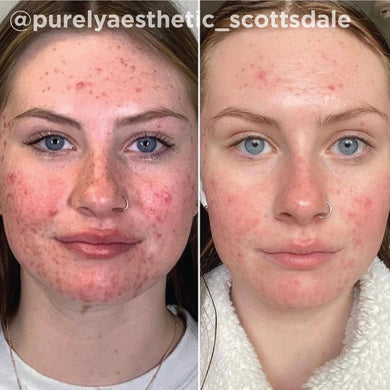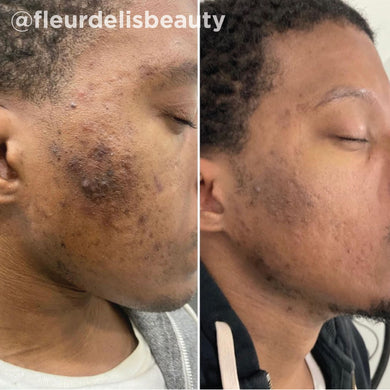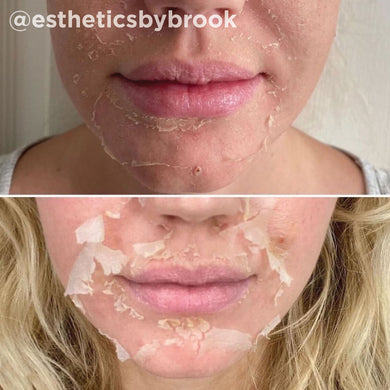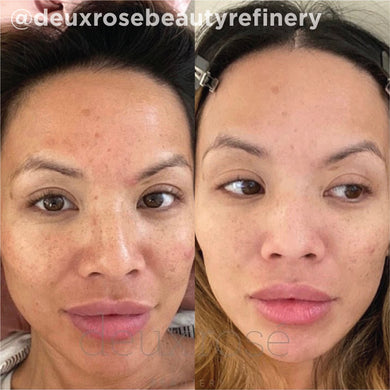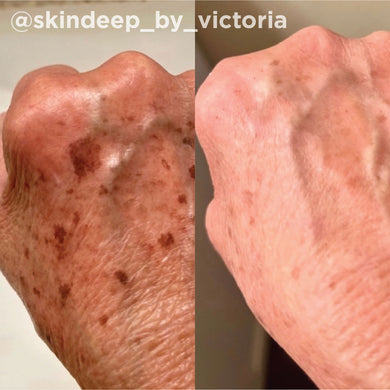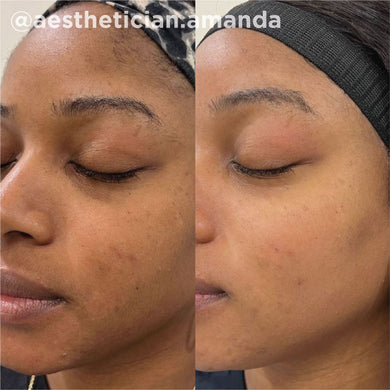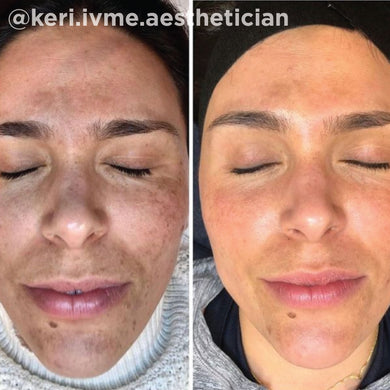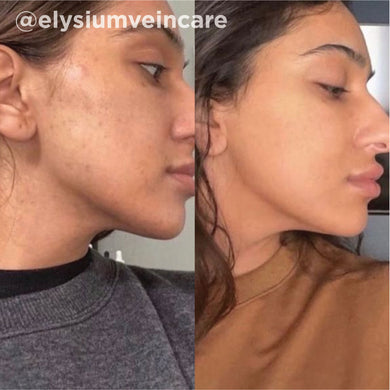Younger-Looking Hands
As a skincare pro, your facial skin is your business card. SPF is always a yes. Eye masks are your BFF. Even your low-maintenance skincare routine rivals that of a K-beauty 12-step ritual. That probably makes your face both the envy of and the inspiration for your friends’ own skincare routines. But, you’re STILL probably dealing with the “hands of time” – the wrinkled, red, dry, overexposed, over-washed, over-sanitized hands that work as hard as an intern and get the same amount of thanks (aka, not a lot, if any). You’re probably wondering what you can do to prevent the look of your hands from “aging.” Here, we explore the aging process of hands from wrinkles to pigment changes, as well as professional treatments you can get for a little refresh.
But first, why do our hands age this way?
Hands start at a slight disadvantage than the rest of our skin. They lack oil glands (which we’re thankful for, because that could get problematic when scrolling our feed) and have thinner skin to allow for buttoning, pointing, petting, picking things up…all the movement we need to get things done. Remember the last time you were stressed in traffic? Your hands were probably locked tight on the steering wheel at ten and two, making them ripe for UV exposure. Extrinsic (external) factors like air pollution, sun damage, and frequent hand washing all add up to the cumulative aging we see on our hands well before we see it anywhere else. To prove it, hold your hand against a less-exposed area like the torso or (ahem) your bum, and you’ll see the difference between skin that’s constantly exposed versus skin that’s not.
Why are hand peels growing in popularity?
Like anything over the past years, the pandemic may have expedited extrinsic hand aging factors like excessive hand washing and sanitizing. While these two actions keep us healthy and safe, excessive hand washing and sanitizers mess with our skin’s barrier and microbiome, leaving skin weakened, ill-equipped to hold on to critical hydration, and susceptible to damaging assaults like air pollution. We are also generally getting more savvy, looking to whole-person skincare and selfcare rather than just targeting certain “trouble spots” or focusing only on facial skin to combat signs of aging and look more youthful.
Who’s eligible for a hand peel?
This depends on your skin type, Fitzpatrick skin type (how much melanin your skin has and how your skin reacts to sun exposure), and desired results. You may visit a dermatologist, seeking out hand help on issues like visible veins, loose skin, or loss of fullness, which may only be successfully addressed by procedures like injectables. However, if you are experiencing issues like rough texture, coarseness, hyperpigmentation/dark spots, or signs of aging like wrinkles, you might be a great candidate for a hand peel. Chemical peels help lift the top layers of skin (which are often more dull and discolored) while encouraging fresher skin cells to the surface. Sloughing off this dead skin can also help minimize deep-set wrinkles while creating an optimal environment for intense hydration and even treatments or serums that target pigment and aging concerns. And, a hand peel instantly reveals fresher, smoother skin.
What to expect when getting a hand peel
The skin on the body and hands is different from the skin on the face, but the process for getting a hand peel is fairly similar in treatment protocols and aftercare as getting a face peel. Always consult with your dermatologist or practitioner to see if a hand peel is right for you.
- Once you speak with your practitioner, they will recommend a good hand peel for you, like a VI Peel Body Treatment, the first painless and skin-tone inclusive chemical peel formulated exclusively for the skin on the body.
- A few days prior to your hand peel, you’ll be instructed to wash your hands with a gentle and fragrance-free cleanser, and to avoid exfoliation. You may also be advised to wear SPF on your hands to help further protect your skin prior to treatment, like VI Derm SPF 50.
- On the day of the peel, you’ll be taken through a traditional contraindication questionnaire to ensure you are a good fit for the hand peel.
- Similar to a face peel, your hands will first be prepped for the peel, which includes cleansing and degreasing. Then, the peel solution will be applied using medium pressure with a gauze. The number of passes you receive with the peel solution will depend on the intensity of the skin concern and your skin type (both determined before treatment begins).
- Your practitioner will avoid applying the body peel to the webbing of your fingers as well as the cuticles.
- When getting a painless and self-neutralizing peel, like the VI Peel Body Treatment, you will not need to wash off the peel. Your hands will likely be covered with gloves for up to 4 hours after the peel, as a mental reminder not to wash your hands.
- Once your 4 hours are up, you will be instructed to wash your hands with a gentle and non-abrassive cleanser, like VI Derm Gentle Purifying Cleanser.
- Apply a generous amount of sunscreen after the first 4 hours of the treatment and apply sunscreen consistently for the next 14 days (indefinitely to maintain results). We like VI Derm SPF 50 Sunscreen.
- 1 hour before bedtime, wash your hands again with a gentle, fragrance-free cleanser like VI Derm Gentle Purifying Cleanser and lukewarm water. Avoid using hot water for 7-10 days.
- Your practitioner may prescribe additional treatments, like VI Derm Retinoic Serum with 0.1% Tretinoin to further increase cellular turnover and to boost the rejuvenating benefits of the hand peel.
- To help reduce excessive dryness and potential irritation, follow a post-treatment recovery regimen that includes VI Derm Post-Treatment Repair Cream to soothe, hydrate, and repair. The Post-Treatment Repair Cream can also be applied 10 minutes after your prescribed treatment products, like the Retinoic Serum.
- Your hands should start flaking or peeling around 4-7 days after peel application. Your skin will peel as much as it needs to, so don’t worry if you don’t see much peeling. The peel has now penetrated your skin and is working under the surface to refresh and renew.
- While you are peeling, avoid anything that drives heat to your hands, like hot water and sun exposure. In addition, avoid putting anything on your hands except your Post Treatment Repair Cream, SPF, and treatment products.
- Full results can be expected up to 14 days after treatment. Enjoy your fresh, youthful new hands!
- And as always, contact your practitioner if any issues arise, including extreme sensitivity, redness, or excessive peeing.
How frequently can you get a hand peel?
Everyone’s skin and results will be different because each person’s skin type, texture, and skin issue (like pigment to wrinkles) will differ. Based on your concern, more than one hand peel might be necessary to achieve your desired result. We recommend spacing out your hand peels 4-6 weeks apart to maintain the health of your skin, while also creating an optimal environment for results and full recovery.
Sources:
https://www.newbeauty.com/dermatologist-recommended-hand-cream/
